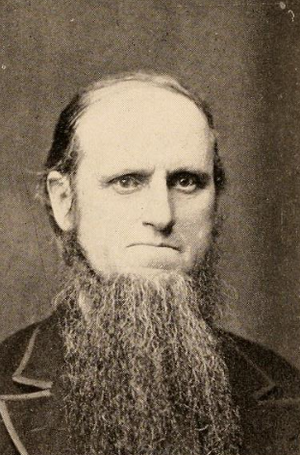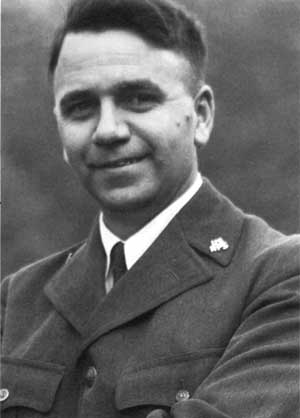Discover Your Roots
SIGN UPDiscover Your Roots
SIGN UPAnsel is a male name of English origin, meaning "God, Protector." This strong and timeless name reflects qualities of divine strength and guardianship. It is associated with various notable places, including Ansel, California, and Mount Ansel Adams, California. The name also holds significance in the realm of technology, being linked to Nvidia Ansel, a technology for capturing in-game screenshots. Additionally, ANSEL (American National Standard for Extended Latin) is a character set used in text encoding. The name Ansel is rich in history and symbolism and has left its mark on various aspects of culture and technology.

Ansel Easton Adams (February 20, 1902 – April 22, 1984) was an influential American landscape photographer, environmentalist, and advocate for conservation. He is renowned for his striking black-and-white images of the American West, which captured the breathtaking beauty of nature. Adams co-founded Group f/64, a collective of photographers championing "pure" photography characterized by sharp focus and the full tonal range of photographs. Alongside Fred Archer, he developed the Zone System, a method for achieving desired prints through technical mastery of exposure, negative development, and printing. Adams' passion for environmental preservation was deeply intertwined with his photographic work. His early exposure to photography occurred at the age of 14 during a visit to Yosemite National Park, and he later became involved with the Sierra Club, using his photography to advocate for conservation. Notably, Adams was contracted by the United States Department of the Interior to capture photographs of national parks, contributing significantly to the expansion of the National Park system. His relentless advocacy efforts led to him being awarded the Presidential Medal of Freedom in 1980 for his impactful contributions. Additionally, Adams played a pivotal role in establishing the photography department at the Museum of Modern Art in New York and co-founded the Center for Creative Photography at the University of Arizona. Despite facing various challenges during his early years, including financial setbacks and health issues, Adams' unwavering dedication to his craft and environmental causes left an indelible mark on the world of

Ansel Bourne (1826–1910) gained fame in the 19th century due to his extraordinary experience of a probable dissociative fugue, making him a notable psychology case. His case, one of the earliest documented, continues to captivate as a compelling example of multiple personality and amnesia. Originally an evangelical preacher from Rhode Island, Bourne garnered attention in 1857 when he suffered a partial amnesia and felt compelled to visit a chapel, despite previously working as a carpenter. In 1887, he embarked on a journey that led him to Norristown, Pennsylvania, where he assumed the identity of A. J. Brown, a stationer and confectioner. After awakening with no memory of the preceding two months, Bourne's case attracted the interest of renowned psychologists William James and Richard Hodgson. Under hypnosis, they observed his ability to switch between his Bourne and Brown personas, with each being unaware of the other. It is speculated that Bourne's story likely inspired the name 'Bourne' in The Bourne Identity movie and novel series.

Ansel F. Hall (May 6, 1894 – March 28, 1962) was an influential American naturalist known for his pioneering contributions to the United States National Park Service. Graduating from the University of California with a degree in forestry in 1917, he began his career as a ranger in Sequoia National Park. Hall's remarkable tenure included serving as the first Park Naturalist of Yosemite National Park, where he established innovative interpretative programs and founded the Yosemite Museum Association. His energy and competence led to several significant roles in the National Park Service, including Chief Naturalist, Chief Forester, and Chief of the National Park Service Field Division. Hall's contributions extended beyond his service, as he co-wrote a report advocating a regional approach to park development, which led to the establishment of the East Bay Regional Park District in Oakland. He also led an expedition to the Rainbow Bridge - Monument Valley area, producing valuable photographs of Indian life in the Four Corners area. Hall's legacy includes numerous publications and books on national parks and natural landmarks. His dedication and expertise have left an indelible mark on the conservation and preservation of America's natural treasures.

Ansel Briggs (1806–1881) was an American pioneer who transitioned from a stagecoach driver to becoming the first Governor of Iowa. Born in Vermont, Briggs received his education in Vermont and Connecticut before relocating to Ohio. His political career began as a Whig party candidate in Ohio, holding various public positions. In 1839, he moved to the Iowa Territory, where he expanded his stagecoach business and engaged in real estate. His political involvement grew, and he served in the Iowa Territorial House of Representatives before being elected as the first Governor of Iowa in 1846. During his gubernatorial term, Briggs focused on maintaining independence from outside influences and initiated the state's government formation and school system organization. He also played a role in developing Iowa's transportation infrastructure. Ansel Briggs made significant contributions to the development and governance of Iowa during his lifetime.

Ansel Edward McLaurine Talbert (1912–1987) was a prominent American aviation journalist known for his testimony before the Senate Internal Security Subcommittee in 1955, following allegations of being a Communist by journalist Winston Burdett. Throughout his career spanning over 50 years, Talbert's impactful work as an aviation writer and editor included interviewing aviation pioneers such as Jimmy Doolittle, Charles Lindbergh, Howard Hughes, and Billy Mitchell, shedding light on the significance of military aviation in its early stages. Talbert's contributions extended to his role as the aviation editor for the New York Herald Tribune and later as a writer for aviation trade publications like Travel Agent Magazine and Air Cargo News. His dedication to the field of aviation journalism left a lasting legacy. Ansel Edward McLaurine Talbert passed away at his residence in Bridgeport, Connecticut.
All images displayed on this page are sourced from Wikipedia or Wikimedia Commons.We use these images under their respective Creative Commons or public domain licenses. Wherever applicable, author attributions and license information are provided. If you believe an image is used incorrectly or outside its license terms, please contact us so that we can review and correct the issue.